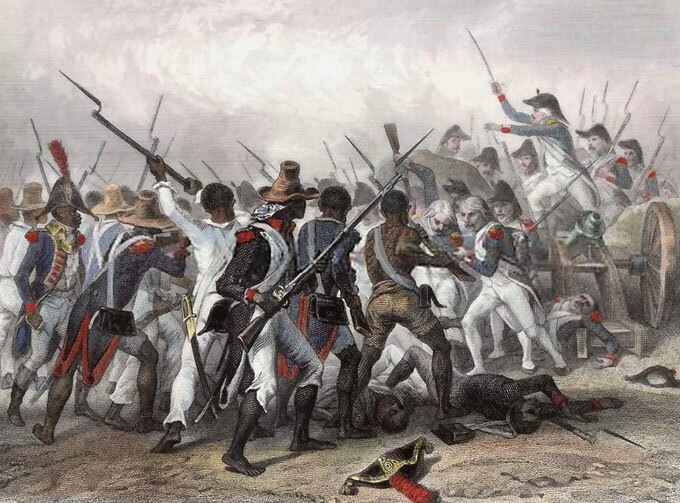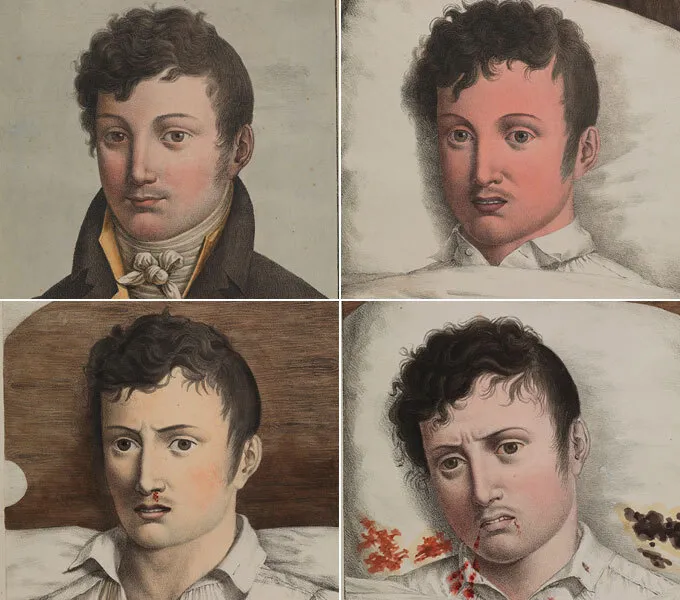Past plagues offer lessons for society after the coronavirus pandemic
Starting with the Roman Empire, societies have often dealt resiliently with deadly outbreaks

Inspired by plagues and religious wars in Europe, Pieter Bruegel the Elder’s circa 1562 painting “The Triumph of Death” depicts a terrifying scene of destruction in which an army of skeletons attacks the living.
incamerastock/Alamy Stock Photo
It was an optimistic time. A healthy economy showered wealth on elites and allowed many ordinary citizens to live comfortably. Local goods and exotic imports filled shops and markets. Political leaders ruled a vast network of cities and trade routes.
Then the enemy attacked. An infectious disease leapfrogged from one population center to another. People died in droves. Political leaders scrambled to recover from a dizzying sucker punch to public and economic health.
This is not a tale about the United States or any other nation besieged by the new coronavirus. Instead, it’s a story about the ancient Roman Empire, where a contagion known as the Antonine Plague felled victims throughout the realm, from Egypt to continental Europe and the British Isles in the late 160s.
Accurate mortality data for the Antonine Plague don’t exist. But written accounts from that time point to mass deaths. Physician and philosopher Galen described victims as suffering from open sores in the windpipe, rashes of dark blisters, vomiting, diarrhea, fever and other symptoms of what may have been smallpox. Perhaps 7 million to 8 million people perished in what some consider to be history’s first pandemic, says Kyle Harper of the University of Oklahoma in Norman. Harper is a historian of the Roman Empire and ancient epidemics.
The Antonine Plague and other epidemics and pandemics that struck before 20th century vaccines and medical knowledge hold lessons, but no easy answers, for governments and people today grappling with COVID-19.
One lesson looms large: Societies can’t indefinitely avoid outbreaks, but they can withstand even severe pandemics. Past political systems have found ways to bounce back from mass illness and unthinkable numbers of deaths.
The extent to which deadly outbreaks have altered the course of civilizations is controversial, though. Some scholars, such as Harper, contend that pandemics often changed political systems in big ways. Other investigators argue that pandemics, though deadly, caused relatively little political and economic havoc.
Whatever the political and economic fallout, pandemics and epidemics have typically had social consequences, for better or worse. For instance, devastating yellow fever outbreaks in the 19th century bolstered the institution of slavery in New Orleans, whereas in Haiti the disease actually helped slaves seeking freedom from French colonists.
“Sometimes [infectious diseases] accelerate history or reveal where a society was already going, while sometimes they fundamentally change the trajectory of societies,” Harper says.

Trustworthy journalism comes at a price.
Scientists and journalists share a core belief in questioning, observing and verifying to reach the truth. Science News reports on crucial research and discovery across science disciplines. We need your financial support to make it happen – every contribution makes a difference.
Diseased empire
Sometimes pandemics do both in the same society. Widespread infectious disease influenced both the expansion and decline of the Roman Empire, Harper argues. In his 2017 book The Fate of Rome: Climate, Disease and the End of an Empire, he contends that pandemics interacted with climate fluctuations to induce resilience at first and later irreversible weaknesses in the Roman Empire.
Humans of course suffered from infectious diseases well before Roman times. In particular, the origin of cities, starting about 6,000 years ago, brought people into closer quarters, where bacteria and viruses could more easily spread, especially through contaminated food and water supplies in a time before proper sanitation.
But it wasn’t until the rise of Rome that the elements needed to bring about pandemics appear to have come together for the first time. Population growth and long-distance trade in the Roman Empire proved a boon to diseases that jumped from animals to people, such as smallpox and measles.
The Antonine Plague struck during the reign of Marcus Aurelius in the late 160s. Though millions died, the empire was big enough to absorb those losses, which still left roughly 90 percent of the empire’s population intact, Harper says. Political reorganization and power sharing were required to counteract food shortages and an economic decline in the wake of the pandemic. Marcus Aurelius invited civic leaders from throughout the empire to join his imperial government. Their wealth and knowledge helped Roman elites to improve conditions in the empire’s provinces, and provincial governments were given greater power to resolve local issues.
Roman society rebounded, at least for a while.
Possible first pandemic
This map show the extent of the Roman Empire (dark gray) at the time of Marcus Aurelius’ reign. Red dots mark sites where written sources possibly refer to the Antonine Plague, which began in 165 and may have been the first pandemic.
Roman Empire sites linked to the Antonine Plague


Source: K. Harper/The Fate of Rome 2017
Then, in the mid-200s, a poorly understood pestilence known as the Plague of Cyprian swept through the Roman Empire. Eyewitness accounts, including that of the disease’s namesake, Cyprian the Bishop of Carthage, described painful deaths preceded by days of fatigue, bloody stool, fever, bleeding from the eyes, blindness and hearing loss. An influenza virus or a viral hemorrhagic fever similar to yellow fever and Ebola may have caused this deadly outbreak, Harper suspects.
Combined with drought, foreign invasions, infighting among generals and a rapid loss of coin values, the Plague of Cyprian brought the Roman Empire to its knees. For over a decade, the disease spread and likely killed a larger percentage of the population than the Antonine Plague had, Harper says, though precise numbers are hard to establish. As the central government reeled, a series of emperors were chosen — and sometimes quickly deposed — by the military based on an aspiring ruler’s popularity with generals. But the empire never regained its former prominence, Harper says.
By the early 400s, the western half of the Roman Empire gave way to foreign invaders. In the east, the empire held on for a bit. But in the mid-500s, an outbreak of bubonic plague known as the Justinianic Plague, caused by the bacterium Yersinia pestis (SN: 12/6/18), spread through Roman territory just as volcanic eruptions caused substantially cooler global temperatures, likely leading to lower Mediterranean crop yields, Harper contends. Death rates likely reached 50 percent or more of the population, he suspects. Soon after, the Roman Empire suffered military losses to Islamic armies and was reduced to a minor state.
Rather than swiftly destroying the Roman realm, plague and climate change “sapped the vitality of the empire,” Harper says.
Political resilience
Harper’s reconstruction of Roman history rings hollow to environmental historian Merle Eisenberg. Even given large mortality rates, the plagues that hit the Roman Empire had limited social and political fallout, Eisenberg, of the University of Maryland’s National Socio-Environmental Synthesis Center in Annapolis, contends.
Written and archaeological data recently analyzed by Eisenberg and colleagues (SN: 12/2/19) indicate that life during the Justinianic Plague, for instance, proceeded much as it had before the outbreak in some places. Roman legislation continued to be issued, the monetary system remained stable and farmland continued to be cultivated, as indicated by ancient pollen collected from lake beds. “Plague certainly struck the Mediterranean, but it did not seem to impact the lives of most people,” Eisenberg says.
If a majority of Roman subjects had died, there should have been less time to bury plague victims with inscribed tombstones and less money to erect new buildings with inscriptions detailing who built them and why. But the number of such inscriptions in Syria, a region hit hard by the plague, stayed stable during the pandemic, Eisenberg’s group reported in December in the Proceedings of the National Academy of Sciences. Eisenberg concludes that substantially less than half of the Roman Empire’s population must have succumbed to the Justinianic Plague.

That estimate is based on limited evidence that doesn’t tap into the Justinianic Plague’s broad political and social effects across the Roman Empire, Harper argues. But given considerable gaps in what’s known about how that outbreak played out from one region to another, this debate will be difficult to resolve.
For his part, Eisenberg says true devastation from a pandemic didn’t arrive until the medieval Black Death, which killed perhaps 75 million to 200 million people — half of Europe’s population — from 1346 to 1351. Recurrences of the Black Death, caused by the same bacterium as the Justinianic Plague, lasted until the 18th century in Europe and the 19th century in the Middle East. But even the Black Death fell far short of causing civilization to collapse, Eisenberg says.
Harper and other historians have suggested that the Black Death spared so few farmers and other laborers that survivors successfully demanded better working conditions from the ruling class. John Haldon, a Princeton University historian of ancient Europe and the Mediterranean, agrees that mass deaths spurred economic shifts, such as a gradual loosening of the feudal system in which peasants received parcels of land in return for serving a lord or king. “Yet there were no political collapses at all,” says Haldon, who supervised Eisenberg’s graduate research but did not participate in his Justinianic Plague study. Western European states and kingdoms stayed largely intact during medieval times.
In modern times, better medical care and vaccines have generally kept pandemic mortality rates below those suffered centuries ago. But a modern, globalized world in which many nations are economically intertwined and communications flash instantly across continents is especially vulnerable to financial disruptions when pandemics strike, Eisenberg suspects.
“Premodern plagues generally caused more deaths than infectious diseases today do,” he says. “But pandemics today, such as COVID-19, have larger political and economic impacts than those in the past.”
From his perspective, history’s lesson for people now is to stay vigilant: Once the coronavirus has been medically contained, the hard work of dealing with the pandemic’s shocks to our way of life must accelerate.
Sign up for our newsletter
We summarize the week's scientific breakthroughs every Thursday.
Certifiably immune
Those shocks sometimes run deep. Unrelenting outbreaks of infectious disease can modify an existing social order or even help to bring it down, historians have found.
Consider yellow fever. The mosquito-borne viral disease aided a successful rebellion of black slaves in Haiti against French colonial rule. Yale University historian of science and medicine Frank Snowden describes that event in his 2019 book Epidemics and Society: From the Black Death to the Present.
Haiti’s slave uprising lasted from 1791 to 1804. When Napoleon sent more than 60,000 soldiers to put down the rebellion, many European newcomers quickly succumbed to yellow fever because they lacked immunity that black Haitians had already acquired. Yellow fever ended up helping Haiti’s slaves win their freedom.

The disease also thwarted Napoleon’s ambitions to expand his empire into the Americas, Snowden says. In 1803, as a humiliating military defeat fast approached in Haiti and prospects of war with Britain increased, the cash-strapped French ruler sold Louisiana to the United States. That transaction, which expanded slavery’s reach in the U.S. South, set the stage for yellow fever to instigate entirely different social changes in 19th century New Orleans.
Yellow fever killed more than 150,000 people there between 1803 and the Civil War’s start in 1860. No cure or vaccination existed for a disease that killed about half of those it infected. Yellow fever deaths were painful and horrifying. Many victims vomited thick, black blood before succumbing after several days. Those who survived the infection became immune, or what people at the time called “acclimated.”
In a city with stark divisions between rich and poor, men and women and within racial groups — whites, “free people of color” and slaves — acclimated citizens held special status, says Stanford University historian Kathryn Olivarius. That immunity-based social system produced New Orleans’ most powerful and wealthy families, many of which are still prominent, Olivarius concluded in the April 2019 American Historical Review. Her analysis included written accounts, official documents and medical articles from the pre–Civil War era.
White people who survived yellow fever could receive a certificate of acclimation, ensuring them access to good jobs, bank loans and houses in the best neighborhoods. Many immigrants arriving in New Orleans in the 1840s, especially Irish and Germans, saw infection as a path to success and were willing to risk death to become acclimated.

Black people received no such benefits. Not only did the slave economy withstand repeated epidemics, but resistance to yellow fever and the likelihood of a long working life increased a slave’s monetary value to an owner by 25 to 50 percent, Olivarius estimates.
It’s not yet clear if someone who recovers from COVID-19 gains immunity (SN: 4/28/20), as with yellow fever. Even so, possibly immune individuals are drawing attention in this year of the coronavirus. Countries such as Chile, Germany and the United Kingdom are considering issuing “immunity passports” — documents certifying that a person has recovered from COVID-19 — that would let these individuals go back to work early. Immunity passports might become an increasingly attractive strategy as it takes a year or more to develop a coronavirus vaccine. “If so, we should heed lessons from the past and beware of potential social perils,” Olivarius says.
Forgetting pandemics
A final lesson to glean from the past is perhaps the hardest to follow: Don’t forget what happened. Don’t let the next generation forget, either, because another outbreak will surely arrive when it is least expected.
Snowden observes that the influenza pandemic of 1918 and 1919, which killed an estimated 50 million people or more worldwide, was put out of mind by many people soon after it burned out. “It’s curious how such a major event could be so quickly forgotten,” Snowden said on April 2 during an online interview hosted by JAMA.
Scientists have warned for the last 20 years — as a series of infectious diseases including SARS, MERS and Zika emerged — that new pandemics and epidemics are on the horizon, Snowden said in the JAMA interview. Yet the United States and other countries were woefully unprepared for COVID-19.
Perhaps pandemic forgetfulness is as contagious as infectious diseases. In his 1722 book A Journal of the Plague Year, Daniel Defoe, also the author of Robinson Crusoe, used historical accounts to construct a fictional man’s experiences during an actual 1665 bubonic plague outbreak in London.
Defoe presents harrowing accounts of plague deaths and forced isolation of the infected in their homes. Yet as infections waned, people flocked into the streets and “cast off all apprehensions” when they encountered individuals limping from plague-caused groin sores and exhibiting other symptoms that “were frightful to the last degree, but the week before.”
In any age, a return to the soothing certainty of daily routines can help erase memories of having dodged a viral killer. Time will tell if this “viral amnesia” repeats itself when COVID-19 finally retreats.







